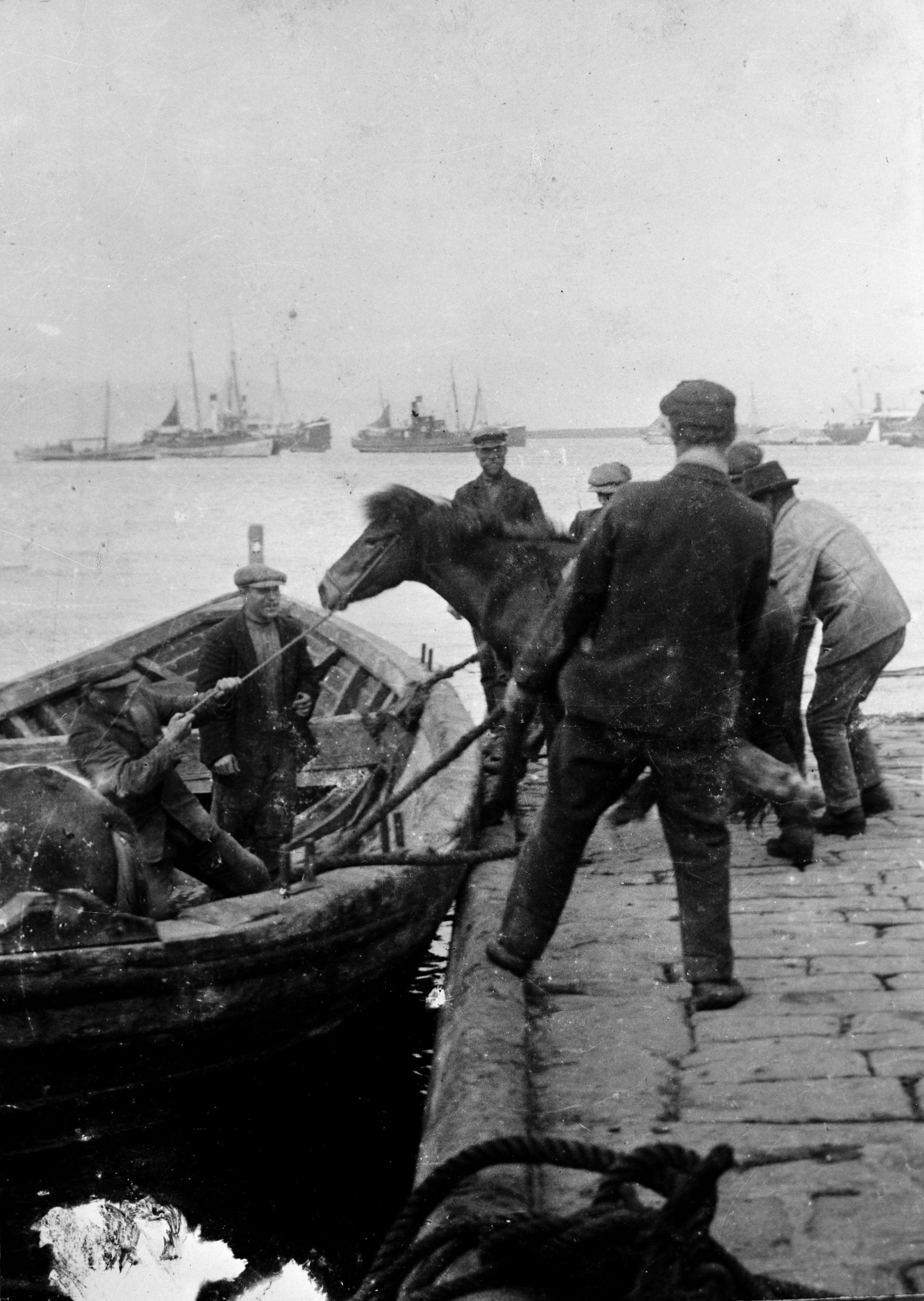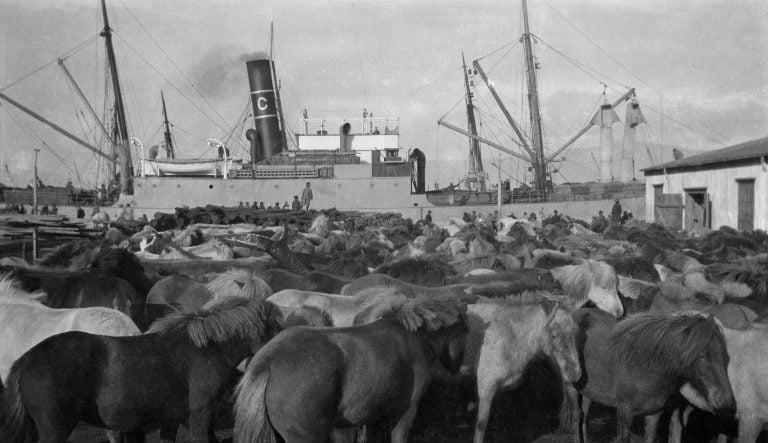“You can’t have it for gold or a good word”
The Icelandic horse is one of the unique features of the country. It has maintained that status from the very first settlers arrived more than 1100 years ago. Early as 1851, a commercial sale of horses began to British customers. A significant increase in sales became the norm in the following years, peaking at 5.700 horses in one year. From 1851 through 1900, it sold over 65 thousand horses overseas. Farmers benefitted greatly from this commerce. The export took place from the Reykjavik harbor, and many argued that the sale of horses to the UK was unacceptable since most of the horses sold to the UK ended up in coal mines where they worked under the worst conditions. Still, strict regulations were adhered to in their treatment there. Today the horses are sold and exported to farms and joyriders in Europe.
Valtýr Stefánsson, editor of Morgunblaðið, stayed in Denmark for a while and got to know the local people’s attitude towards the Icelandic horse: “They are the apple of the eye of the small farmers in West Jótland. If a man is asked on the road, what is the price of the Icelandic horse that he has pulling the wagon , then the answer is usually: You won’t get him for gold or good words.”


Sources: Faxaflóahafnir SF & Reykjavík Museum of Photography


